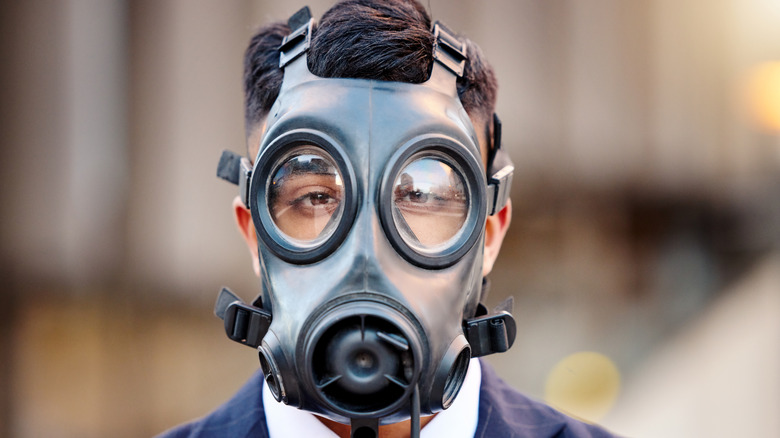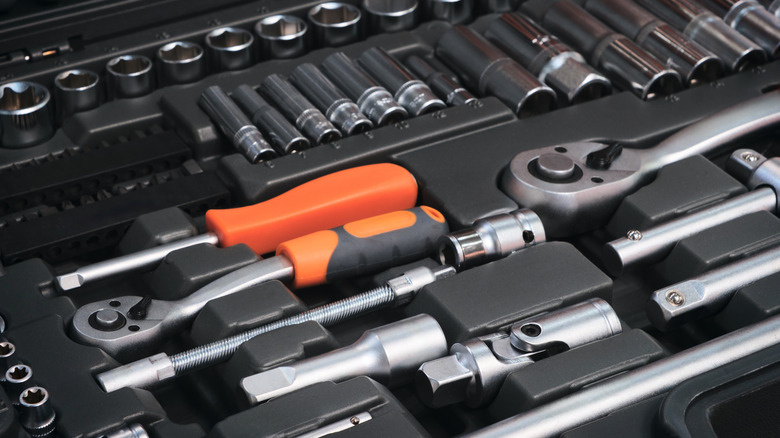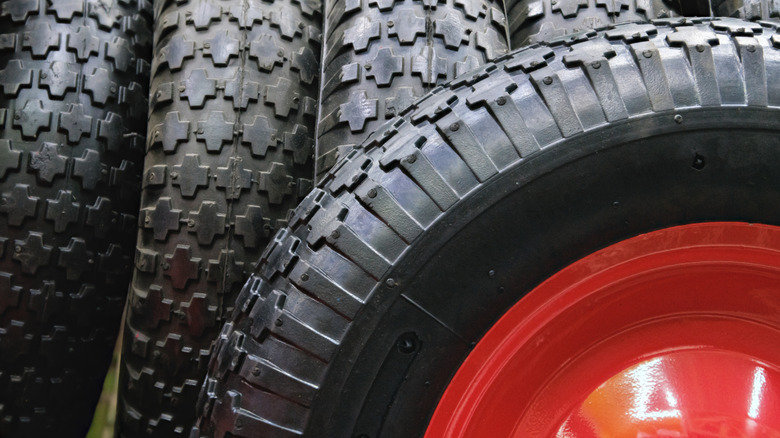What The Awful Stench Coming From Harbor Freight's Tools Is About
Ah, that unmistakable Harbor Freight smell. Anyone who's ever set foot in the store knows it, and anyone who hasn't been to a Harbor Freight can't really imagine it. It comes from plasticizer residue and rubber-vulcanization byproducts, among other factors, but ultimately reflects the cost-cutting behind inexpensive tools.
Online commenters have described the smell with a range of epithets from mild "1980s Volkswagen" to more aggressive "livestock liniment," among other less charitable descriptions. But some people say they enjoy the smell, which highlights the issue in an unexpected way. Here's one way to look at it: We often associate certain smells with negative experiences because we've learned they precede bad outcomes — whether spoiled food or tools that fail quickly. But the people for whom Harbor Freight smells good value the experience of buying affordable tools enough that they associate that pleasure with the store's smell. They also associate it with a number of tools that Harbor Freight customers say are great.
But many find it unpleasant and are apparently prone to thinking of the odor as the "made-in-China smell" associated with cheap goods. Chinese manufacturers do produce inexpensive goods, but they also manufacture some of the world's highest-quality products. Many Snap-on tools are made in China, for example, and Milwaukee is owned by a Chinese company. And there's nothing uniquely Chinese about the chemicals involved. So the issue isn't Chinese manufacturing — it's Harbor Freight's commitment to ultra-low pricing.
Plastics and rubber
Rather than being caused by a single chemical or phenomenon, the smell of Harbor Freight stores appears to be a soup of raw materials, chemical additives, and poor processes related to the manufacture of plastic and rubber. Plastic tool components are processed with chemicals called plasticizers that improve flexibility, make plastics easier to mold, make products flame-retardant, and reduce surface tension in parts that require it. Plasticizers also appear in paint, cosmetics, and cement products such as sanded and unsanded grout. Their components — phthalates, dicarbonates, phosphates, and fatty acid esters — sometimes have more recognizable names like formaldehyde, benzene, and toluene. The more flexible the plastic, the stronger the potential odor. TPE tool overmolds, seen on the handles of power tools, are known for having odors. Many of these chemicals have odors ranging from mild to severe — and combined, they can be overwhelming.
Rubber products like inexpensive tires — which are often pinpointed by customers as the key source of Harbor Freight's smell — have their own set of odor-causing factors. Hydrogen sulfide and mercaptans are byproducts of rubber vulcanization, for example. Hydrogen sulfide is also known as sewer gas, and mercaptans are used to make natural gas and propane smell alarmingly bad. Other chemical byproducts of rubber manufacture include low-quality antioxidants, fillers, and VOCs like volatile amines, benzene, styrene, and toluene, all of which can be tied to unpleasant odors. All of this should have you rethinking your plan to use old tires as garden planters or quirky furniture.
But why Harbor Freight?
Smelly plastic and rubber are not unique to Harbor Freight. Indeed, they're not unique to our injection-molded era or, conceptually, even to plastics and rubber. Leather-handled tools once carried foul smells because poorly tanned leather can rot, and some older tanning methods used to use urine and manure. Plastic-handled tools made from the 1930s on sometimes smelled of vomit as they aged because their Cellulose Acetate Butyrate (CAB) handles released odiferous butyric acid over time. Xcelite nutdrivers and certain Craftsman tools were infamous for it. But unlike the CAB tool handles that were used by reputable companies like Snap-on, it's mostly inexpensively manufactured tools that give off bad odors associated with plasticizers and rubber vulcanizers.
So why is this a problem mostly for cheap tools these days? The answer lies in manufacturing shortcuts. Plastics can be deodorized before shipping in various ways, from optimized manufacturing processes like using low-odor polymers and managing extruder temperatures to dedicated odor-reducing steps such as chemical scrubbing, plasma treatment, and photocatalysis. Rubber processing has a similar set of odor management processes. The odor of EPDM, a rubber common in the sidewalls and other parts of inexpensive tires, can be addressed by using a peroxide rather than a sulfur vulcanization system, avoiding cheap additives, using deodorizing post-treatments, and time-consuming processes like aeration and ensuring complete vulcanization. These steps are costly, making them easy targets for omission in low-cost tool manufacturing. And why is it associated with Harbor Freight almost exclusively? One reason may be that, unlike Walmart or other retailers, nearly every aisle at Harbor Freight is filled with these materials, concentrating the odor.


